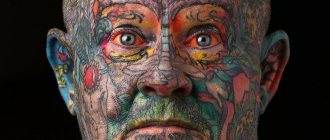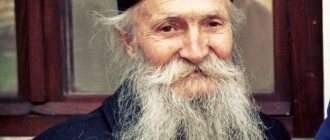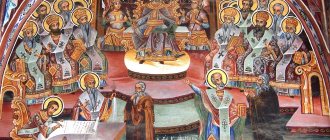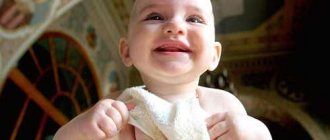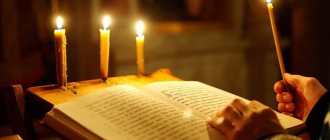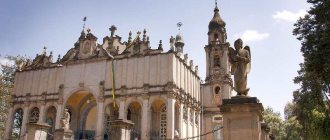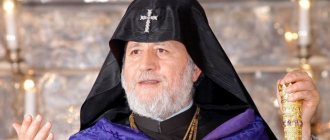Egyptian Copts in questions and answers
On Sunday, Bishop Tawadros became the 118th patriarch of Egypt's Coptic Orthodox Church. Tawadros II succeeds Shenouda III, who died in March this year at the age of 88 after 40 years at the head of the Coptic Church.
| Bishop Tawadros. © REUTERS Mohamed Abd El Ghany |
What are the powers of the Coptic Patriarch?
As the head of an autocephalous (that is, completely independent) church, he is to Copts what the Pope is to Catholics. His full title is “Pope of Alexandria and Patriarch of All Africa on the Holy See of St. Apostle Mark." He governs 51 dioceses and determines religious doctrine.
Who are Copts?
Copts represent the majority of Egyptian Christians, who are distributed among more than ten different churches. They like to call themselves "authentic Egyptians." Their name comes from the Greek word "aegyptos" by reducing the first syllable. They occupy a prominent place in both the history and modern life of Egypt, and do not want to be perceived as a “minority”. As a result of the active work of the past Patriarch Shenouda III, there is a religious upsurge in the community.
| Monastery of St. Bishoy in Egypt, where the Patriarch of the Coptic Church Shenouda III is buried |
How many are there?
We do not have reliable data on this matter. Copts account for about 6-10% of the 83 million Egyptians. In the church, the figure usually cited is 12%. Egyptian Copts are the descendants of those who did not convert to Islam over the centuries. Emigration also plays a significant role. The United States is home to their largest diaspora, numbering 500,000 people.
How are they different from other Christians?
Their church was born out of a schism. In 451 at Chalcedon, Egyptian Christians opted for the Monophysite doctrine, from which it follows that Christ has a single divine nature. The Orthodox Church adheres to approximately the same doctrine, with a few differences. Coptic rituals are quite complex, with a large place given to the cult of martyrs. In addition, there are Catholic and Evangelical Coptic churches, which were founded in the 19th century. Their attire dates back to the times of the pharaohs. In addition, like Egyptian Muslim women, Coptic women are often circumcised.
To what social circles do they belong?
Their representatives can be found both among the bourgeoisie and among the poorest peasantry. Coptic peasants live mainly in Upper Egypt. During the monarchy, the Coptic bourgeoisie controlled half of the national wealth. Copts played an active role in trade and industry and were numerous among the large landowners. Agrarian reform and Nasser's nationalizations deprived them of most of their wealth. Today, many wealthy Copts are again appearing in the country.
How is their relationship with the state?
| Coptic churches of Cairo, Mary Girgis quarter |
Since Nasser's time, Egyptian presidents have pursued discriminatory policies against their Christian compatriots.
In 1970, Sadat made Islamic Sharia law part of the Constitution. The Coptic Patriarch Shenouda III protested, but it was all in vain. In 1981, Sadat placed him under house arrest, from which he was released by Mubarak in 1985. Subsequently, Shenouda III began a policy of rapprochement with the authorities, which were sometimes perceived as overly pliable among young Copts. Until today, only a Muslim could be the president of Egypt. In addition, according to an unspoken rule, Copts cannot break into the highest echelons of the armed forces. In the last years of his leadership of the country, Mubarak appointed several Copts to the government: they also received the portfolio of Minister of Economy. However, in the last elections under his regime, which were, as before, “rigged”, Copts received only ten parliamentary seats (seven of them appointed by the president) in a parliament of more than 500 representatives.
Do they have freedom of religion?
Yes, but until 2000 they needed presidential permission to build or expand a church. Moreover, it was issued extremely rarely... Buildings built without permission were often bulldozed. The authorities provided this service to the Islamists in exchange for their refusal to create a political party. In 2000, Hosni Mubarak transferred these powers to the governors, but this had almost no effect on the situation.
What can they expect from the new government?
Today, the Muslim Brotherhood government has a Coptic minority entrusted with scientific matters. Among President Morsi's three closest advisers is Coptic Samr Marcos, who is involved in the political transition process. The draft Constitution states that personal status and religious affairs in these communities will be determined on the basis of “the principles of Christian and Jewish law,” which is not necessarily to the liking of secular-minded Copts. In addition, there is still no certainty about Sharia law. Its “principles” must be the “chief source of law,” leaving the widest possible scope for interpretation. Moreover, Article 4 states that decisions about the essence of these very principles will be made by the “sages” from Al-Azhar University.
Original publication: Les coptes égyptiens et leur pape en questions
Egyptian Christians: who are the Copts and what you need to know about them
Copts are the indigenous people of Egypt and the direct descendants of the Egyptians. They are among the first Christians in the world and representatives of one of the most ancient branches of Christianity. This is precisely the population of Egypt that, over the course of several thousand years, created a great civilization.
The editors of Interesting to Know will tell the story of how the descendants of a great civilization became an ethnic and religious minority in Egypt.
Cairo. Egypt
In December 639, a detachment of the Arab army under the leadership of the commander Amr ibn Al-As invaded Egypt. The military operation was carried out by a ridiculously small number of soldiers, only 3.5 thousand people. However, this was enough - densely populated Egypt fell in less than a year.
Arabization began. A tax was imposed on the indigenous population, who predominantly professed Christianity. It was called jizya and applied to all non-believers who found themselves inside the Arab Caliphate.
Since the 7th century, the Arabs stopped using the designation “Egyptian”, preferring the term “Coptic”. Over time, it was this name that took root, and the whole world began to call them Copts, and the non-Chalcedonian Egyptian church - Coptic Orthodox.
Zabbaleen Cave Church in Old Cairo. Egypt
The official number of Copts is approximately 6 million people, that is, about 9% of the population of modern Egypt are descendants of Egyptians. True, this number is considered to be underestimated; Coptic and independent sources estimate their number at 10-20 million people.
In Egypt and Ethiopia you can easily distinguish an Arab from a Copt. And it’s not even a matter of anthropological signs - on the wrist of a Coptic there is a tattoo in the form of a cross. It is most often done in childhood. But the reasons and where this tradition came from are not known with certainty. There are several versions:
- when in the 7th century the Egyptian authorities banned crosses for Christians, Copts began to wear (or draw) a cross on the inside of the wrist;
- in the event of persecution, one who has such a sign will not be tempted to hide his faith and renounce, since this sign irrefutably testifies to belonging to Christianity;
- so that in case of death he will be buried according to Christian customs. Since Copts lived among Arabs, there was a possibility that they could be confused with Muslims.
Thus, in modern Egypt there live quite an impressive number of descendants of those people who built the pyramids and the legendary Luxor. They are native speakers of Coptic, the last member of the Egyptian language family. Today it is almost completely replaced by Arabic. The Coptic language is retained as the main language of worship, as well as as the language of communication in some Coptic families and remote areas of Egypt with a predominant Coptic population.
Liked? Tell your friends:
When Russian intellectuals talk about Egypt and the Egyptians, there will definitely be someone who remembers the Copts, thereby demonstrating a high level of their erudition. Not knowing about the existence of mysterious Copts in decent Moscow society today is almost indecent. A little history and facts Copts are the name given to Egypt's traditional Christians, who make up 8% to 10% of the country's population and belong to the Egyptian Coptic Orthodox (non-Chalcedonian) Church, led by Patriarch Shenouda III. At the same time, the Copts are one of the most ancient Christian communities in the Middle East. Initially, the word “Copt” came from the Greek “aiguptios” and meant “Egyptian”. Gradually, starting from the 1st century AD, the Egyptians adopted Christianity, which became the main religion of the country until the arrival of the Arabs in 641. Thus, in a sense, all the inhabitants of Egypt are descendants of the Copts. Christianity is brought to Egyptian soil by St. Apostle Mark, who founded one of the oldest Churches in the world - the Church of Alexandria. And it was from Alexandria that the new religion spread throughout Egypt. Egyptian Christians themselves consider 284 AD to be the beginning of the Coptic era. - the year that opens the so-called calendar of Coptic martyrs: this year Diocletian becomes emperor of Rome, whose reign was marked by terrible cruelty of persecution of Christians, especially in Egypt. During his reign, countless Copts were subjected to horrendous torture and execution. Since then, the Copts have been calculating their chronology using the abbreviation A.M., which corresponds to the Latin “Anno Martyrum” - literally “Era of Martyrs.” However, at the end of the 5th century, an event occurred that forever changed the fate of the Coptic Church. At the Fourth Ecumenical Council of Chalcedon, held in 451, the dogma was adopted that Jesus Christ has two natures - Divine and human. Representatives of the Coptic Church, together with the Armenian, Ethiopian and Syrian “Jacobite” Churches, refused to agree with such a formulation, believing in the one Divine nature of Christ. Due to a theological conflict, the Copts, called Monophysites, were excommunicated from the family of Christian Churches. The isolation of the Coptic Church for many centuries prevented inter-church communication between Egypt and other countries, but at the same time it allowed Egyptian Christians to preserve the unique features of early Christian traditions that were lost by other Christian denominations. When, after Russian churches that amaze with their grandeur and splendor, you find yourself in a Coptic church, it becomes unclear whether you are even in a church. Someone is walking somewhere, there are benches, fans are whirring near the ceiling, threadbare rugs are laid carelessly and crookedly on the floors, and children are running around. And this is in the capital. And in provincial churches, parishioners take off their shoes before entering the temple, which clearly indicates an initially common tradition among Christians and Muslims. Moreover, most likely, the tradition of leaving shoes outside the threshold of the temple and entering the House of God barefoot originates in ancient Egyptian customs, because it is known that the Egyptians of the times of the pharaohs entered their pagan temples with their shoes off. There are other parallels in the rituals and prescriptions of Egyptian Coptic Christians and Muslims, which only emphasizes the commonality of the traditions of the two religions of one country. It is known that drinking alcohol is considered a sin in Islam. However, Egyptian Christians also have a negative attitude towards drinking alcohol. Moreover, during communion, Copts in recent years began to use not wine, but unfermented (that is, not fermented) grape juice. Coptic prosphora is a round flatbread of unleavened bread with an image of a Coptic cross in the center. Also in the village Coptic church you can see people sitting right on the floor under some icon and calmly snacking on something they brought with them. During the holidays, Coptic temples turn into meeting places for local youth. It is in the church that girls and boys look for grooms and brides. The Copts feel free here - like in the Father’s home... There is something real in this, some very true essence of true Christianity, at the same time difficult to perceive by the Russian Orthodox consciousness, which, as a rule, is accustomed to the gold of Byzantium and to submission to hierarchy. Continuing the “golden” theme, I would like to note that in Coptic churches the decoration is more than modest, and the icons look like the works of primitivists - the images of saints seem to have been drawn by a child. The theme of childishness and naivety can also be seen in the attire of Coptic monks, who wear black hoods embroidered with crosses as headdresses, reminiscent of caps worn by infants and symbolizing the purity of their owners, comparable to the purity of babies. Services in Coptic churches are performed in Arabic and Coptic (the latter is the ancient language of the Egyptians, which was supplanted over time by Arabic). Women and men sit on opposite sides of the temple, and women can wear trousers and not cover their heads. Often in Russia one hears from “experts” the most amazing stories about Egyptian Christians, sometimes reminiscent of the inventions of medieval travelers. Let's try to understand some of them. Five myths about Copts Myth I. The Copts are the only descendants of the Pharaonic civilization. Most of our compatriots, who have an idea of who the Copts are, are convinced: it is the Egyptian Christians who are the descendants of “those very” Egyptians who created the great civilization of Ancient Egypt with its pyramids, the Sphinx, Tutankhamun and Nefertiti. This idea fills Russians with unprecedented reverence for the Coptic population of Egypt, against the background of which there arises a disdainful attitude towards Egyptian Muslims, who allegedly trace their origins to the nomadic Arabs who came to Egypt with an army of Muslim conquerors who almost enslaved the Coptic Christians. Of course, the opposition between “us and others” in this context suggests itself: “our Copts” vs. "foreign Muslims". However, this idea is nothing more than another ideologeme: in fact, the majority of Egyptian Muslims are exactly the same descendants of the ancient Egyptians as the Copts. In fact, the Egyptians are a single people, divided by religious affiliation: the ancestors of some remained in the bosom of their former religion, while the ancestors of others accepted a new faith. Interestingly, the faces of many modern Egyptians - both Christians and Muslims - are strikingly similar to images on ancient Egyptian frescoes or papyri, which is confirmed by both Egyptologists and anthropologists. Myth II. Copts have access to secrets and possess sacred knowledge hidden from humanity. This myth is especially widespread among mystically oriented Russians who have heard something about the Gnostic tradition and the apocryphal Gospels found in Egypt in the last century. There is an opinion that the Coptic Church, excommunicated for centuries from the family of world Churches, managed to secretly preserve some true Christian mystical knowledge based on the Gnostic tradition. In reality, Copts do their best to avoid hints at any secret knowledge and are unlikely to be familiar with it, despite the unconditional presence in the Coptic tradition of a wide range of symbolism, colors, numbers, etc.